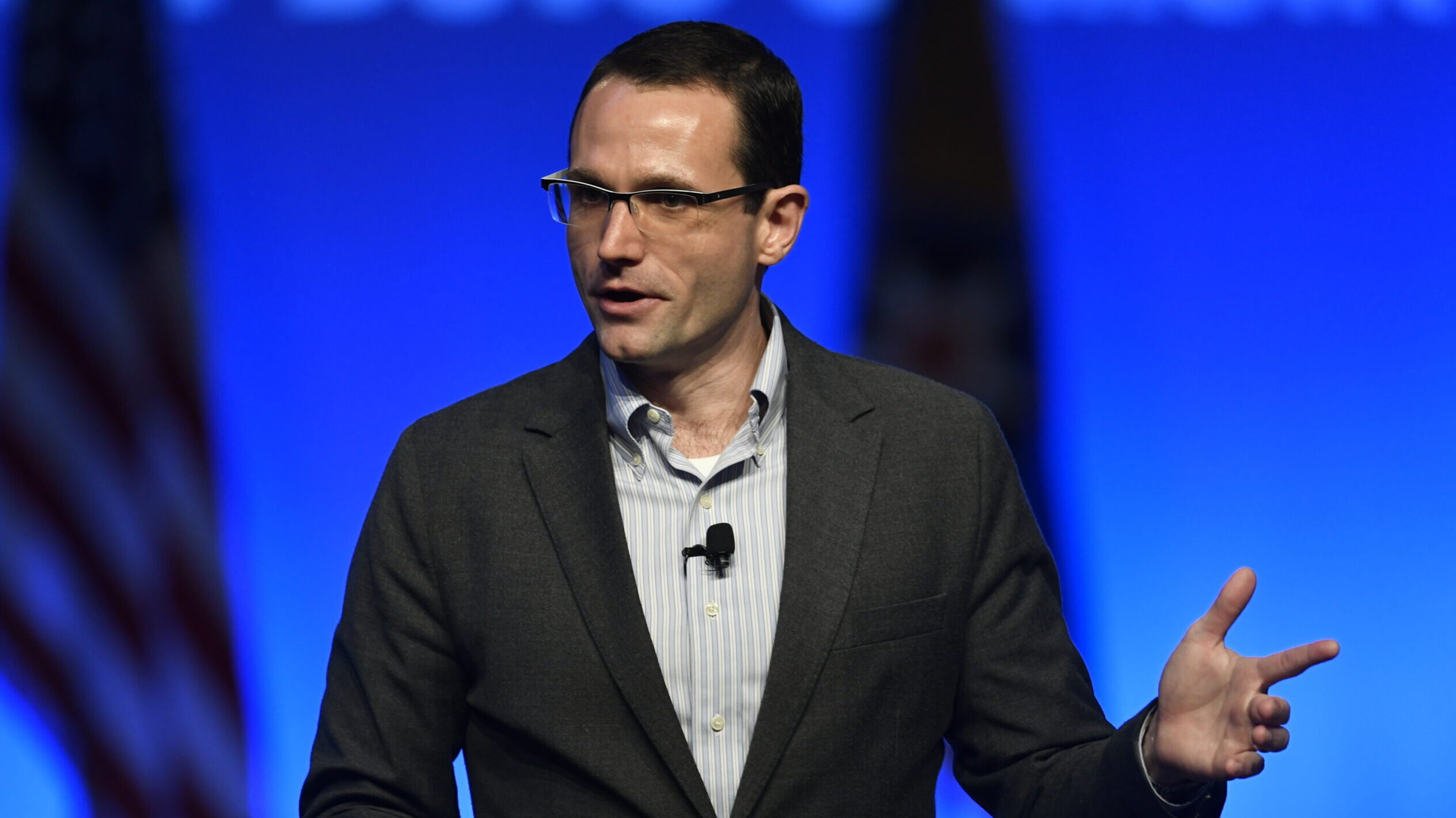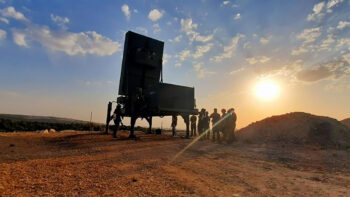MICHAEL MARROW

Dr. Will Roper, then Assistant Secretary of the Air Force for Acquisition, Technology and Logistics, speaks during the Air Force Association Air, Space and Cyber Conference in National Harbor, Md., Sept. 16, 2019. (U.S. Air Force photo by Staff Sgt. Chad Trujillo.)
WASHINGTON — It’s been over two years since Will Roper left the Pentagon as the Air Force’s acquisition czar, and though senior service leaders seem to have moved away from some of his more ambitious ideas, Roper is not giving up on the digital design tools that he claims are critical for the United States to keep ahead of China.
“Imagine if China makes this pivot,” Roper said of a revolution in digital design, where data-rich models can enable quick refreshes of complex weapon systems like aircraft. “Well, their designs may not be perfect between digital reality and physical, but if they have a way to iterate and tighten those gaps, then they will be exploring at an echelon far beyond us,” he warned Breaking Defense in an August 4 interview.
Throughout his tenure in the Air Force, Roper advocated for pushing the envelope on digital design for some of the service’s top priorities. Chief among them was the Air Force’s Next Generation Air Dominance (NGAD) fighter, where Roper envisioned sixth-gen jets whose designs could be rapidly iterated to accommodate some of the newest advances. That idea appears to have gone by the wayside at least in the case of NGAD, though officials have said the service’s Collaborative Combat Aircraft drone wingmen could be more viable candidates.
“Now that I’m not in the government, it’s really not my place to judge anymore,” Roper said when asked about officials seeming to abandon some of his ideas for aggressively pursuing digital engineering. “I certainly have hopes for the government as a whole and for the Air Force as a whole.”
Recently, Air Force Secretary Frank Kendall called digital engineering “over-hyped” when discussing the service’s delayed T-7A Red Hawk training jet, noting that while digital engineering provided real improvements, it didn’t deliver all what was promised.
Roper responded by laying blame at the Red Hawk’s acquisition strategy — the program was awarded as a fixed-price contract, leading Boeing to incur over $1.1 billion in losses to date — and rebuffed narratives of failure. (Roper was the head of Air Force acquisitions when the contract was awarded in 2018, though he was not in the post when the program was being structured.)
The T-7A “is a wonderful achievement in our first lesson on digital engineering,” he said. “An aircraft was built in three years and flown in three years. And that hasn’t happened since 1958.”
He then added, “That’s time to circle the wagons and say, ‘now what exactly enabled that, and what is limiting us taking this next step into production.’”
The Push for Formula One
After leaving the Pentagon in 2021, Roper co-founded a startup called Istari, which was unveiled earlier this year. Backed by former Google chief executive officer Eric Schmidt, Istari is offering a platform for clients to pursue their own digital engineering journey who may not otherwise have the resources or knowledge for how to do it themselves.
“What we’ve done is take the system engineering function that is the digital thread as well as a huge degree of potential automation and turn it into a software platform available to everyone,” Roper explained.
Breaking Defense visited the 611 battalion, part of the 282nd fire brigade and a key part of Israel’s detection network to conduct precision counter-battery fire missions.
Roper is inspired in large part by one industry that has already seized on the concept, which he talked up frequently in his Air Force days: Formula One racing.
F1 cars, Roper explained, extensively use digital engineering to rapidly iterate designs, leading to constant improvements to give drivers an edge — including in real time on race day.
“Formula One is amazingly complex from an aerodynamic perspective. And for my opinion, it’s more complex than what we do in aviation,” Roper said. “They are dealing with micro forces that they need to predict to within a millisecond of lap time, and they’re able to do that.”
Roper also pointed to a key tradeoff F1 drivers make to inform their digital models by rigging their cars with hundreds of sensors, a lesson he said is applicable to aircraft. Though each of these gizmos carries a weight penalty, the sacrifice is worth it, he said, “because the data coming off of it is more valuable.”
The same should be true for aircraft, where designers are often extremely sensitive to considerations like weight to maximize performance. “If I were building aircraft today, I would instrument them as much as my tolerances would allow,” Roper said.
There will be failures along the way as the Pentagon slowly incorporates digital engineering, Roper said, and officials will need to think differently about challenges like cybersecurity and pushing ahead with software updates forged in a digital environment.
Ultimately, a key challenge will be embracing digital models as a “source of truth,” which must be backed by enough data to make the models reliable. It’s a change that won’t happen overnight, Roper said, though he assured the same was true for Formula One, which has already passed that milestone.
“There will be myriad learning events on the way to Formula One prowess at this new tradecraft,” he said. “The government needs to buckle up, pun intended, and get ready to learn and decide is it really in the business of innovation? Or does it like talking about it, knowing that somehow innovation is always denied to the public sector.”

No comments:
Post a Comment